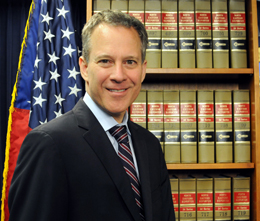Microbeads in Wastewater

NY Attorney General Eric Schneiderman has been leading the charge in NY for a ban on microbeads in consumer products. Image from the AG’s website.
New York Attorney General Eric Schneiderman released a report on the effectiveness of wastewater treatment facilities at removing microbeads. The report found microbeads in effluent of 25 of 34 New York wastewater plants sampled, demonstrating that they are not removed by standard wastewater processing, but instead pass into the environment.
Microbeads are tiny plastic particles added to soaps, toothpaste and facial scrubs. They do not break down in the environment.
Two of the facilities participating in the study, Lake Placid and Westport, empty into the Lake Champlain watershed. Microbeads were found at both.
The nine facilities that did not have microbeads tended to be smaller in size. Six of them used advanced filtration that may improve microbead removal. However, four of the 25 facilities with microbeads also used advanced filtration.
“From Lake Erie to the Long Island Sound, microbeads, a harmful form of plastic pollution, are finding their way into waters across New York state," said Schneiderman. Legislation to ban the use of microbeads has been introduced in both New York and Vermont. In New York last year legislation passed the Assembly but died in the Senate. This year neither body has yet acted on it. In Vermont legislation passed the House unanimously earlier this year but Senate action will be delayed until next year.
The main ingredient signifying the presence of microbeads in personal care products is polyethylene, but products containing polypropylene, polyolefin, polyethylene terephthalate, polymethyl methacrylate and nylon should also be cause for concern. Learn more about this issue and ways to take action.
